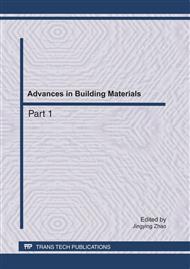p.1699
p.1705
p.1709
p.1714
p.1719
p.1724
p.1729
p.1734
p.1738
Strength Anisotropy of a Tailings Sand and its Effect on Stability of a Tailing Dam
Abstract:
In current engineering practice, the effect of strength anisotropy on stability analysis of tailings dam is often ignored. This paper presents direct shear test results on a tailing sand with different angles between shear direction and bedding plane. It is found that shear strength of this soil is significantly directional dependent. The variations in peak friction angle are about 11o, which is approximately 28.3% of the minimum value. The effect of strength anisotropy on stability of a tailings dam is also investigated. The analysis considering anisotropic strength shows a smaller factor of safety and shallower most critical slip surface as compared with isotropic strength model that is used in current engineering practice. To achieve more accurate stability analysis of tailings dams, it is suggested to take into account shear strength anisotropy of tailings soils.
Info:
Periodical:
Pages:
1719-1723
Citation:
Online since:
May 2011
Authors:
Price:
Сopyright:
© 2011 Trans Tech Publications Ltd. All Rights Reserved
Share:
Citation:


